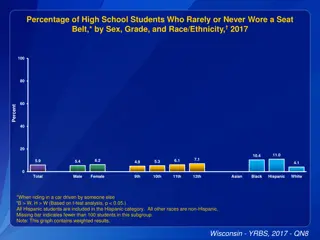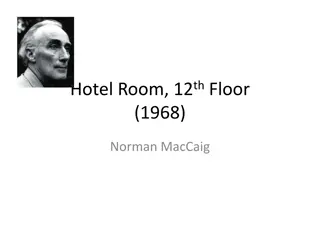Exploring Gender Inequality Through Aphra Behn's "On Loving Two Equally
Aphra Behn's poem "On Loving Two Equally" serves as a satirical critique of the gender inequality of her time, highlighting the disparities in social censure towards men and women who engage in extramarital relationships. Through the use of humor and juxtaposition, Behn challenges societal norms and expectations, shedding light on the double standards faced by women. The poem's tone is ironic, with diction that emphasizes the absurdity of the prevailing attitudes towards relationships. Overall, the message of the poem is a commentary on the unequal treatment of men and women in matters of love and social acceptance.
Download Presentation

Please find below an Image/Link to download the presentation.
The content on the website is provided AS IS for your information and personal use only. It may not be sold, licensed, or shared on other websites without obtaining consent from the author. Download presentation by click this link. If you encounter any issues during the download, it is possible that the publisher has removed the file from their server.
E N D
Presentation Transcript
On Loving Two Equally Aphra Behn
Aphra Behn wrote "On Her Loving Two Equally" as a parody of the men of her era who were not socially censured for having both a wife and a mistress. Most of the humor of her three six-line stanzas is based on the fact that women could not escape such censure if they publicly kept both a spouse and a lover, or if a single woman openly adopted multiple lovers. Wives were supposed to excuse or, even better for their husbands, disregard sexual arrangements outside marriage. Behn highlights the gender inequality of her time, adopting a fickle voice that fits this light verse. While somewhat ironic, the poem is not meant to be taken seriously
the fact of two things being seen or placed close together with contrasting effect. In literature, juxtaposition is a useful device for writers to portray their characters in great detail to create suspense and achieve a rhetorical effect. Example: Charles Dickens A Tale of Two Cities It was the best of times, it was the worst of times, it was the age of wisdom, it was the age of foolishness, it was the epoch of belief, it was the epoch of incredulity, it was the season of Light, it was the season of Darkness, it was the spring of hope, it was the winter of despair, we had everything before us, we had nothing before us, we were all going direct to Heaven, we were all going direct the other way Juxtaposition
Identify the theme of the poem (be sure to provide evidence to support) (3 quotes accompanied by an explanation of how it supports your claim.) Identify the tone. How does diction (word choice) exemplify the tone? What is the message of the poem? What information in the poem and the background information (ppt, readings) lead you to that conclusion? Be sure to provide 3 pieces of evidence and explain Classwork























